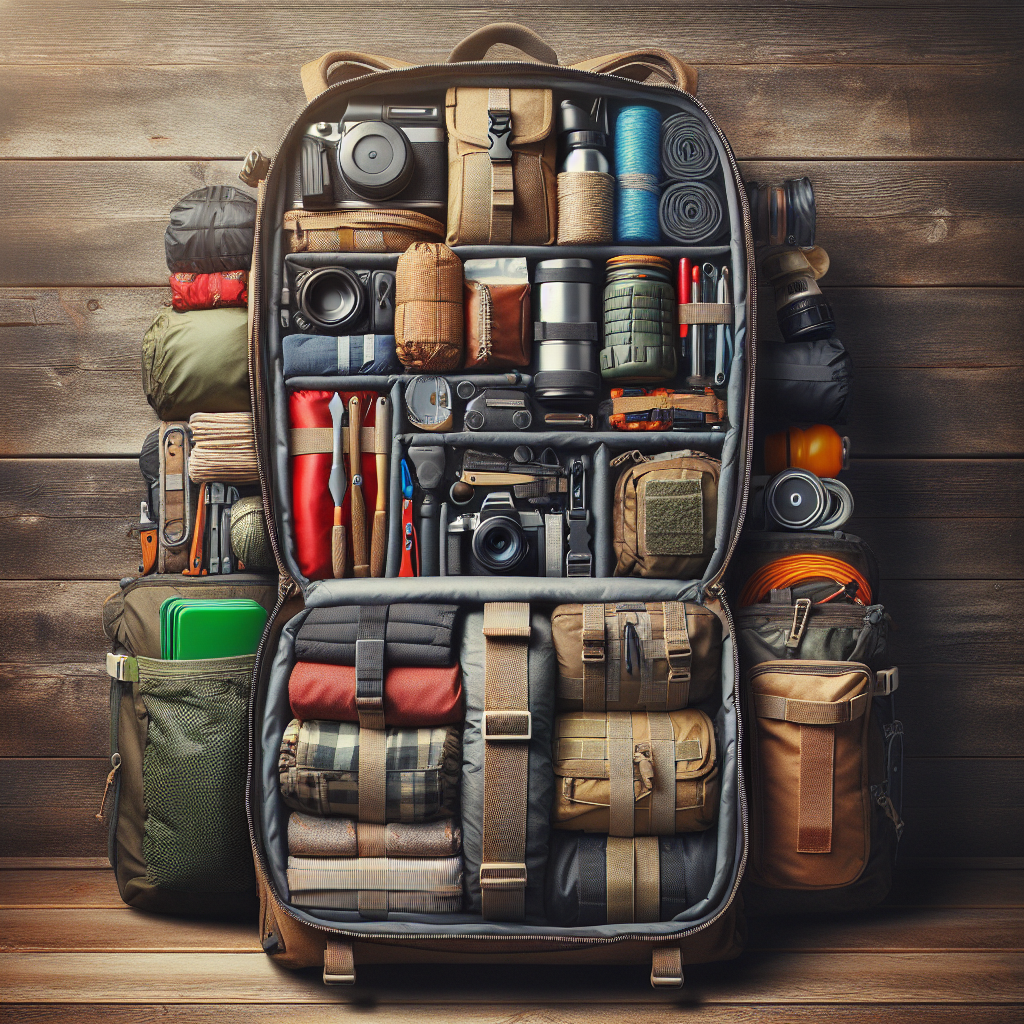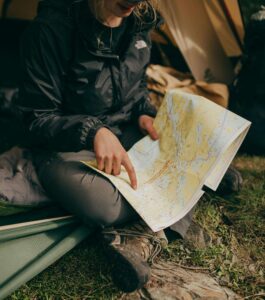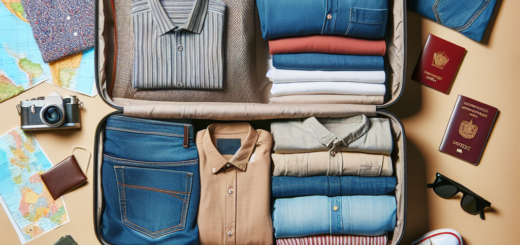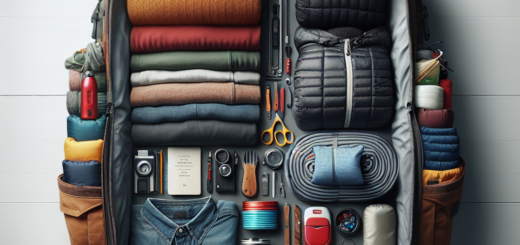How To Pack For An Overnight Backpacking Trip?

Planning for an overnight backpacking trip can be both thrilling and overwhelming. From selecting the right gear to packing efficiently, there is a lot to consider before embarking on your adventure. In this article, you will find practical tips and tricks to help you pack for a successful and enjoyable overnight backpacking trip. Whether you are a seasoned explorer or a beginner, these insights will ensure that you have everything you need to make the most of your time in the great outdoors. So grab your backpack and get ready to hit the trail with confidence!
Choosing the Right Backpack
When it comes to backpacking, choosing the right backpack is crucial. First and foremost, you need to consider the duration of your trip. A day hike requires a smaller backpack than a multi-day trek. It’s important to determine the appropriate backpack size that can comfortably fit all your essential items without weighing you down.
Adjustable straps and padding are important features to look for in a backpack. You want a backpack that can be customized to fit your body shape and size. This will ensure that the weight is evenly distributed and prevent any discomfort or strain on your back and shoulders. Additionally, padding on the straps and back panel will provide extra comfort during long hikes.
Another factor to consider when choosing a backpack is the presence of external pockets. These pockets provide easy access to items that you need frequently, such as a water bottle or snacks. They can also help with organization, allowing you to separate items like a rain jacket or map from the rest of your gear.
Essentials for Survival
When you’re out in the wilderness, it’s important to be prepared for any situation. That’s why there are a few essential survival items that you should always pack For your Overnights . First and foremost, a map and compass are crucial for navigation. Even if you have a GPS device, it’s important to have a backup in case of battery failure or technical issues.
A whistle and signal mirror are important tools for attracting attention in case of an emergency. They can be used to signal for help both audibly and visually. Additionally, a headlamp or flashlight is essential for navigating in the dark and finding your way around camp.
Lastly, a multi-purpose tool is a versatile and practical item to have on hand. It can be used for tasks such as cutting ropes, opening cans, and repairing gear. Invest in a high-quality multi-tool that includes features like a knife, pliers, and screwdriver.
Clothing and Footwear
When it comes to packing clothing and footwear for a backpacking trip, it’s important to consider the weather conditions. Dressing appropriately for the climate will ensure your comfort and safety. If it’s expected to be hot, pack lightweight, moisture-wicking base layers that will help keep you cool and dry. On the other hand, if it’s going to be cold, pack warm and insulating layers.
It’s important to choose clothing that is lightweight and quick-drying. This will allow you to wash and dry your clothes easily if needed. Additionally, pack extra socks and underwear to ensure you have a fresh pair each day. Proper footwear is also crucial. Invest in a pair of sturdy hiking boots that provide good ankle support and have reliable traction.
Sleeping Gear
A good night’s sleep is essential for a successful backpacking trip. That’s why choosing the right sleeping gear is important. Start by selecting a lightweight sleeping bag that is suitable for the expected temperature range. Look for a bag that is packable and does not take up too much space in your backpack.
Consider bringing a sleeping pad for insulation and added comfort. This will provide a barrier between you and the ground, preventing heat loss and reducing discomfort from uneven terrain. If you prefer a pillow, pack a compact and lightweight one, or alternatively, use clothing as improvised pillow.
Lastly, consider whether you’ll need a tent or hammock for shelter. A lightweight tent is a good option if you’re expecting rain or need protection from bugs and other critters. Alternatively, a hammock can be a comfortable and lightweight option for fair weather conditions.
Food and Water
Proper nutrition and hydration are essential for a successful backpacking trip. Plan your meals and snacks in advance to ensure you have enough food to sustain you throughout your journey. Pack lightweight, dehydrated food that can be easily prepared with minimal cooking equipment.
Water is also crucial. Depending on your location, it may be necessary to bring a water filter or purifier to ensure access to safe drinking water. This is especially important if you’ll be relying on natural water sources such as streams or lakes. Additionally, bring a reusable water bottle to reduce waste and stay hydrated on the trail.
Cooking Equipment for an overnight backpacking

If you plan on cooking your own meals during your backpacking trip, there are a few essential items to pack. Start by choosing a lightweight stove and fuel that is compatible with your chosen cooking system. Consider the size and weight of the stove to ensure it fits comfortably in your backpack.
A small cookware set is necessary for preparing meals. Look for lightweight options that include a pot, pan, and lid. Utensils like a spork and knife are also essential for eating and food preparation. Don’t forget to pack a dishcloth or sponge for cleaning up after meals.
Hygiene and First Aid
Maintaining good hygiene is important for your health and well-being during a backpacking trip. Pack biodegradable soap and a towel to clean yourself and your cooking utensils. Lathering up with soap will help prevent the spread of bacteria and keep you feeling fresh.
A basic first aid kit is a must-have for any outdoor adventure. Include items such as adhesive bandages, disinfectant, and pain relievers. Additionally, bring any necessary medications that you take regularly. It’s essential to have a plan for emergencies and be prepared for minor injuries or illness.
Sunscreen and insect repellent are important for protecting your skin from the sun’s harmful rays and pesky bugs. Apply sunscreen regularly to exposed skin and use insect repellent to prevent bites and stings.
Navigation and Communication

When venturing into the wilderness, it’s important to have the means to navigate and communicate effectively. Carry a detailed trail map of the area you’ll be exploring. Familiarize yourself with the map and plan your route in advance. Even if you have a GPS device, having a physical map as a backup is important.
Consider bringing a handheld GPS device to supplement your navigation tools. This will provide accurate coordinates and help you track your progress along the trail. Bring a spare set of batteries for your GPS device to ensure it doesn’t run out of power.
Lastly, don’t forget to pack a fully charged cell phone. While cell service may be limited or nonexistent in remote areas, having a charged phone can still be useful in case of emergencies. It can act as a backup navigation tool, provide access to emergency services, and allow you to communicate with others if needed.
Safety and Emergency Equipment
Safety should always be a top priority when backpacking. Pack a lightweight emergency shelter such as a bivy sack or emergency blanket. This will provide protection in case of unexpected weather conditions or if you need to spend an unplanned night outdoors.
Include a fire starter and waterproof matches in your pack. These items will come in handy for starting a fire to keep warm, cook food, or signal for help. Additionally, bring a whistle and emergency blanket to attract attention and stay warm in an emergency situation.
Lastly, don’t forget to pack a small first aid manual. This will guide you in treating minor injuries and provide valuable information in case of more serious medical emergencies.
Miscellaneous Items
In addition to the essential items listed above, there are a few miscellaneous items that can enhance your backpacking experience. A lightweight backpacking chair is a luxury item that can provide comfort and relaxation at camp. Look for a chair that is compact, lightweight, and easy to set up.
If you’ll be relying on electronic devices such as a cell phone or GPS, consider packing a power bank. This will allow you to recharge your devices while on the trail, ensuring they stay powered up when needed.
A lightweight tarp or groundsheet can be useful for creating additional shelter or protecting your gear from wet ground. It can also be used as a makeshift rain shelter or sunshade if needed.
Lastly, don’t forget to pack a repair kit for your gear. This should include items such as duct tape, thread and needle, and patches for repairing any damage that may occur during your trip. Being able to fix gear on the go can save you from unexpected situations and ensure your trip continues smoothly.
In conclusion, packing for an overnight backpacking trip requires careful consideration of essential items in various categories. By taking the time to choose the right backpack, pack the necessary survival gear, select appropriate clothing and footwear, bring essential sleeping gear, plan for food and water, pack cooking equipment, prioritize hygiene and first aid, ensure navigation and communication tools, prepare for safety and emergencies, and include miscellaneous items, you’ll be well-prepared to embark on an unforgettable adventure in the great outdoors.











